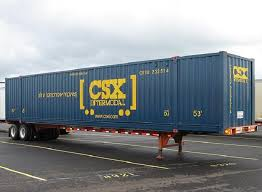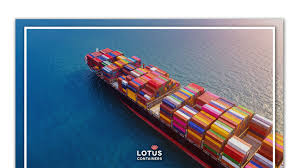Do Regulation and Standardization “stifle" Innovation?
- Michael Enders

- Jul 11, 2023
- 4 min read
The recent loss of the submersible Titan with all five people on board losing their lives is tragic. Undoubtedly, there will be a considerable investigation of the incident with a determination of the causes of the accident and responsibility assigned for those actions and decisions that contributed to the accident. This early in the investigation, we at MSI feel it irresponsible to conjecture as to the specific causes and it certainly is callous to assign blame without all of the facts known. Instead, our concerns are with previous public statements made by the CEO of OceanGate, the late Stockton Rush, regarding his position that the imposition of standards and regulation tend to “stifle innovation”.
As reported on June 20, 2023, in the New York Times By Nicholas Bogel-Burroughs, Jenny Gross, and Anna Betts, a letter was written to Mr. Rush by 38 submersible craft experts stating their concerns that his failures to abide by industry standards presented a substantial risk. These experts came from the Manned Underwater Vehicles committee of the Marine Technology Society. Formed in June 1963, the MTS vision “is to be the leading authority and advocate for marine technology and resources while promoting member success and public understanding”. As reported by the Times, Will Kohnen, the chairman of the committee, said in an interview speaking of Mr. Rush’s refusal to have his submersible certified, “Their plan of not following classification guidelines was considered very risky”. The MTS signatories wrote, “It is our unanimous view that this validation process by a third party is a critical component in the safeguards that protect all submersible occupants.” Mr. Kohnen said that Mr. Rush called him after reading the letter and told him that industry standards were stifling innovation.
The Times reported that Mr. Rush has spoken publicly in the past about what he viewed as regulatory red tape in the industry. “There hasn’t been an injury in the commercial sub-industry in over 35 years,” he told Smithsonian magazine in a profile published in 2019. “It’s obscenely safe because they have all these regulations. But it also hasn’t innovated or grown — because they have all these regulations.” Additionally, Rush told CBS Sunday Morning last year. “At some point, you're going to take some risk, and it really is a risk-reward question. I think I can do this just as safely by breaking the rules.”
It is interesting to note that Mr. Ruston gave credit to the regulations for making submersible operations “obscenely safe”. As allowed by Mr. Rushton, “There hasn’t been an injury in the commercial sub-industry in over 35 years." Is there really such a thing as “obscenely safe” when operating a manufactured vessel at depths where when the hull collapses, the air auto-ignites and an explosion follows the initial rapid implosion causing human bodies to incinerate and turn to ash and dust instantly? All of this occurs in approximately one millisecond. It appears that in such a dangerous and unforgiving operating environment, “obscenely safe” is a desirable outcome.
At MSI, we operate in environments that are standardized and regulated with the primary goal being a combination of safety, reliability, and risk avoidance. Our primary area of expertise is aerospace, space, and defense (ASD). The products and services provided by our clients must perform as designed and intended 100% of the time. Otherwise, the lives of people would be in jeopardy, the effectiveness of our warfighters could be degraded, and/or significant loss of property could happen. These standards and regulations not only reduce risk, they arguably foster innovation at the same time. Commercial aircraft are considerably safer and more fuel-efficient now than they were decades ago. Runway overruns can be mitigated to the extent that no property or lives are at risk and the aircraft can be recovered with no damage. The reliability of weapons means that the rifles used by our troops in the field are not susceptible to jamming as in the past. In other industries, the innovation that occurs in response to standardization and regulation has brought about positive changes, for example:

Years ago, as shown in the top row of the photo, electrical outlets and switches in our homes provided minimal insulation from electric shock, came in so many configurations that safe installation was not apparent and consistent, and workmanship was spotty. Modern switches and outlets have been engineered in accordance with standards to be far safer, more easily manufacturable, and considerably cheaper than unregulated precursors.
With regard to vehicle fuel economy standards, between 1975 and 1985, average passenger-vehicle mileage doubled from about 13.5 mpg to 27.5, while fuel economy for light trucks increased from 11.6 mpg to 19.5. These startling improvements in fuel mileage came about in such a short period of time due to innovations that included catalytic converters, the re-design of engines to operate at increased combustion ratios, and using fuel injection systems instead of carburetors. Engineering and innovation efforts continue to increase mileage through further reductions in the weight of vehicles and the use of continuously variable transmissions(CVT).
Intermodal shipping containers are known as “ISO containers” for a reason. They are designed, manufactured, and used in accordance with an ISO Standard. This standardization allows for the containers to be easily transported amongst ships, trucks, and railcars without unloading. Without this type of standardization, there would be an infinite variety of containers in use making intermodal transportation of freight much more difficult and expensive.
As the above-limited examples demonstrate, innovation in design and use are natural outcomes of standards and regulations. Without innovation, more stringent requirements for safety, efficiency, and manufacturability could not be attained. The innovations brought about by the standards save lives, money, and environmental resources. In our opinion, “obscenely safe” is an ultimate and admirable objective, not a reason to avoid standards and regulations.








Comments